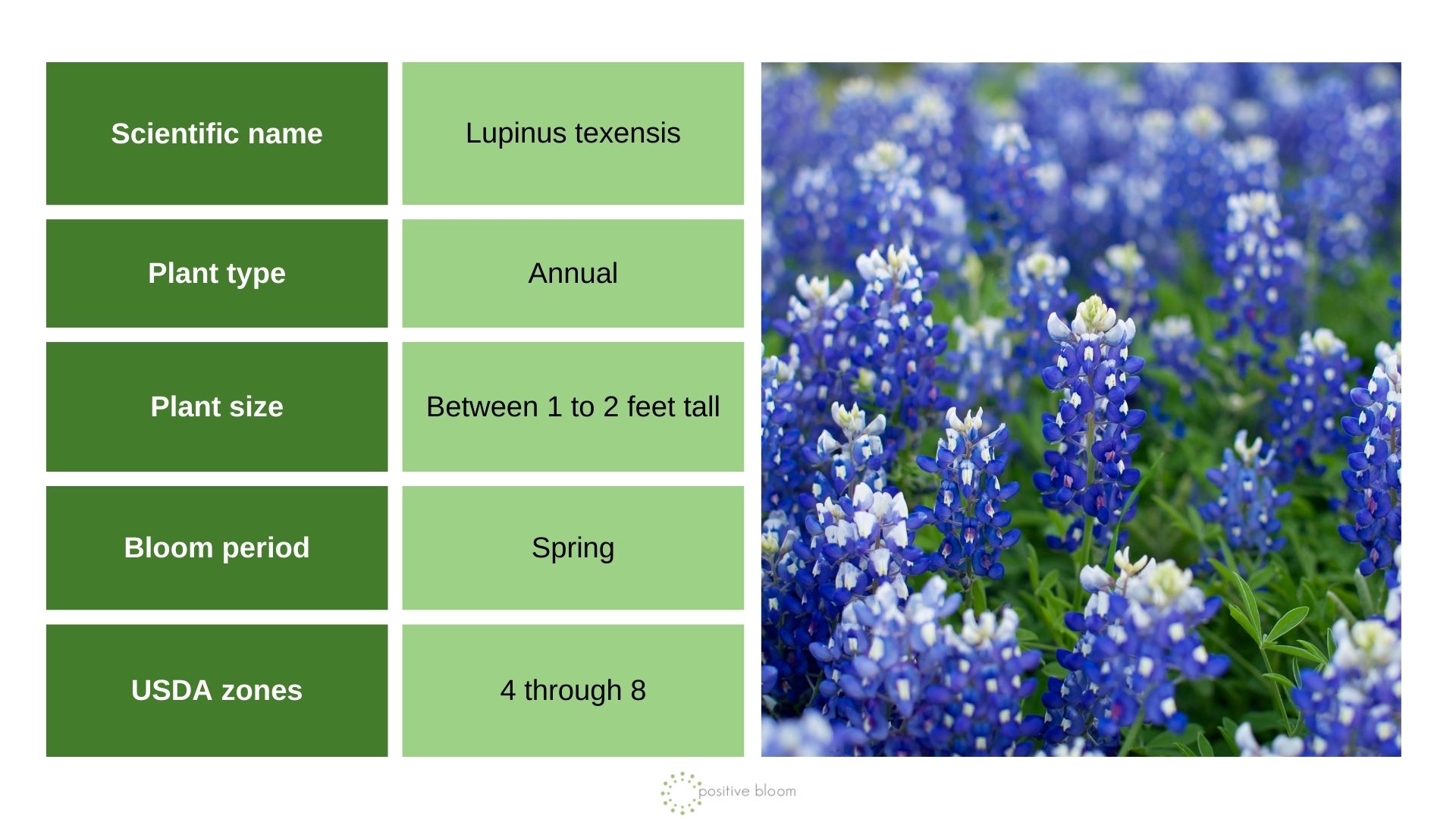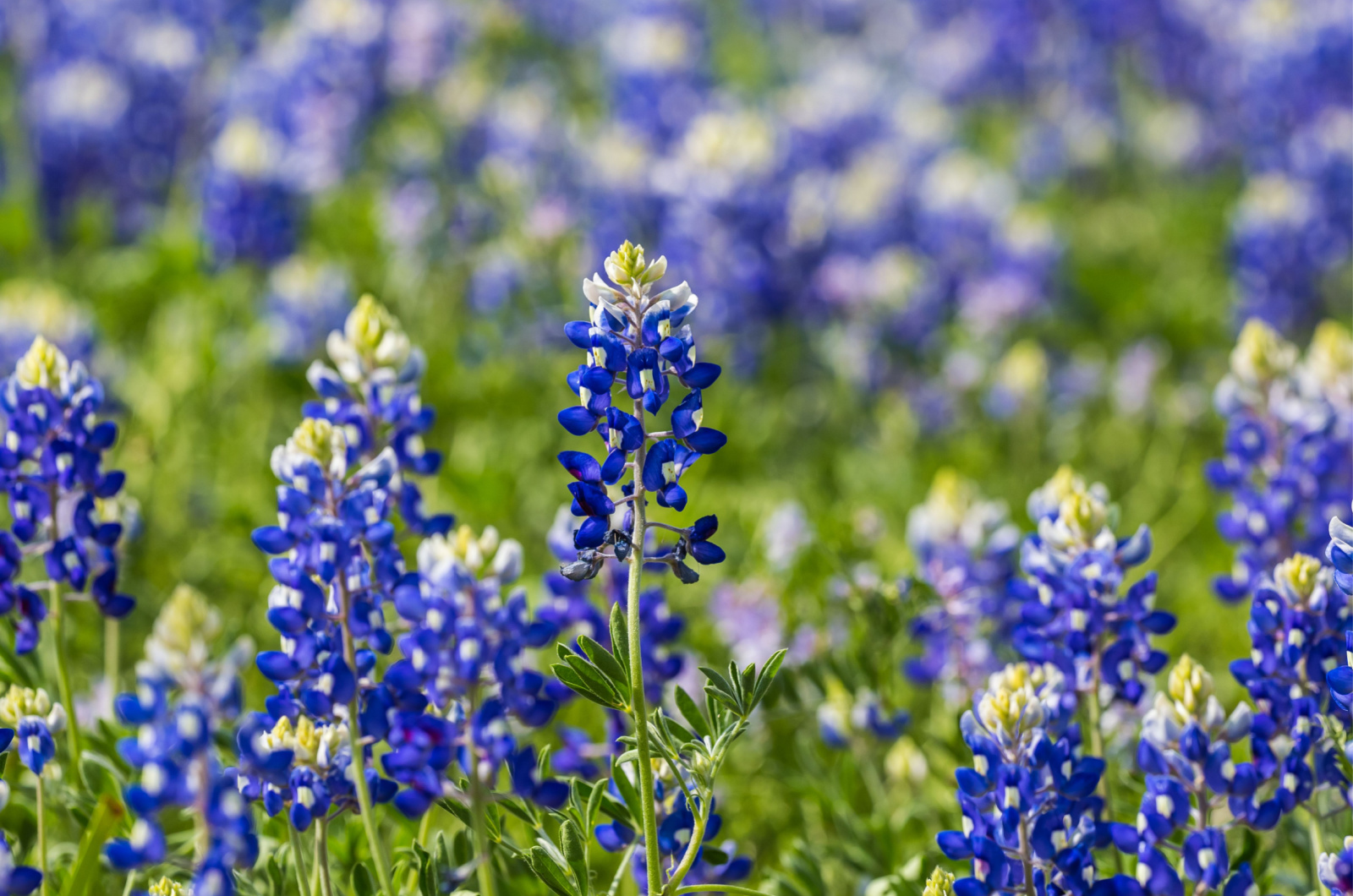Looking for a way to add more color to your garden? Consider growing the famous Texas bluebonnet flower!
The Texas bluebonnet flower, otherwise known as Lupinus texensis, is an iconic wildflower known for its prolific growth and vibrant splashes of blue and white that stand out in the arid Texas terrain.
Although they need some adjustments, bluebonnet flowers are super easy to grow and will keep coming back year after year!
Join us in discovering the simple steps to bring a bit of the Lone Star State to your backyard!
Meet The Texas Bluebonnet Flower
How To Plant The Texas Bluebonnet Flower
Bluebonnets bloom in March and April, so it’s best to plant them in the fall months during September and November. The seeds need a period of coldness to enhance germination rates, so planting them in the fall makes more sense.
In case you didn’t plant them in the fall, you can simply put them in the refrigerator for a few days to trigger germination.
Bluebonnets can’t be grown indoors because they need full sun exposure during the day. Therefore, you should plant them in a sunny location where they’ll be exposed to sunlight for most of the day.
Make sure to plant them in alkaline soil with a pH of 7.5. They grow well in sandy or loamy soil, and you can also add some organic matter to boost their growth.
Instead of burying the seeds, it’s better to simply scatter them over the soil then gently press them down with your hands or a rake. Don’t plant more than ten seeds per square foot because these flowers require more space to grow.
Be patient as they need several weeks to start sprouting. Don’t overwater them or disturb the soil!
You might consider growing some companion plants nearby, such as yucca, lantana, Indian blanket, and Black-eyed Susan.
This might be useful: When And How To Plant Wildflower Seeds: Make Your Wild Wonderland
Types Of Bluebonnets
• Bajada lupine – a compact variety producing smaller flowers compared to Texas bluebonnets.
• Big Bend bluebonnet – a delicate variety known for its larger blooms that have white or light pink tips.
• Nebraska lupine – a perennial variety that produces blue to purple flowers.
How To Grow Texas Bluebonnet Flowers
Don’t worry, you don’t have to be an expert gardener to grow Texas bluebonnet flowers. In fact, they are quite hardy and adaptable. Follow these tips and you’ll have the best wildflower garden!
Water Requirements
Bluebonnets need very little watering. Water them once every other day during the germination period. Reduce watering once the seedlings emerge.
Since they are used to low water intake, you should water them only when the topsoil dries out. Don’t overdo it because they are prone to overwatering.
Light Requirements
We’ve already mentioned that they require a lot of sunlight in order to grow properly. Plant them facing west so that the flowers can get the most sunlight during the day.
Fertilizer Requirements
Bluebonnets can fix nitrogen from the soil, so you won’t need to fertilize them.
This might be useful: Planting Wildflowers Instead Of A Traditional Lawn Has Many Benefits
Temperature Requirements
These wildflowers prefer mild temperatures that are not too hot or too cold. Bluebonnets thrive in temperatures between 55 to 70 degrees Fahrenheit.
Pruning
Occasional deadheading is only required for bluebonnet flowers. You don’t have to worry about pruning them regularly, simply snip some spent flowers away!
If you want, you can leave them and collect the seeds. After that, you should either cut them down to the ground or leave them standing three to four inches above the soil. Mulching will protect them from cold temperatures.
Related: 7 Tips To Help You Collect Wildflower Seeds
Potting And Repotting
In case you decide to grow bluebonnets in containers, choose 3- to 5-gallon containers that have drainage holes in the bottom. Fill them with loamy soil and add some compost for a nutrient boost.
Sow bluebonnet seeds half an inch deep and ten inches apart. Unlike bluebonnets planted in the ground, container bluebonnets require frequent watering.
Propagation
To propagate bluebonnet flowers, gather hard-coated seeds from existing plants or buy them online.
For germination, perform a simple scarification process using sandpaper or a nail file, creating small scratches on the seed coat to aid water penetration. Not all seeds need scarification; focus on the hard-coated ones.
Soak the seeds in water for 12 to 24 hours to simulate natural conditions. Then, you should wait until mid-September to plant them. Follow the planting instructions above!
Common Issues
Bluebonnets are pest-resistant plants, but their seeds are susceptible to pests like sowbugs and pillbugs. These insects open the seeds and feed on them, but they can also damage young seedlings. Get rid of excess moisture that attracts these bugs, such as too much mulch!
Overwatering can lead to root rot, so don’t overdo it and water your bluebonnets only when the soil feels dry.
Yellowing of the leaves is often a sign of nutrient deficiency. Consider applying a slow-release fertilizer if your soil is not rich in nutrients. Other than that, your bluebonnet will be good!
Related: 21 Amazing Wildflower Plants To Grow In Your Easy-Care Garden






